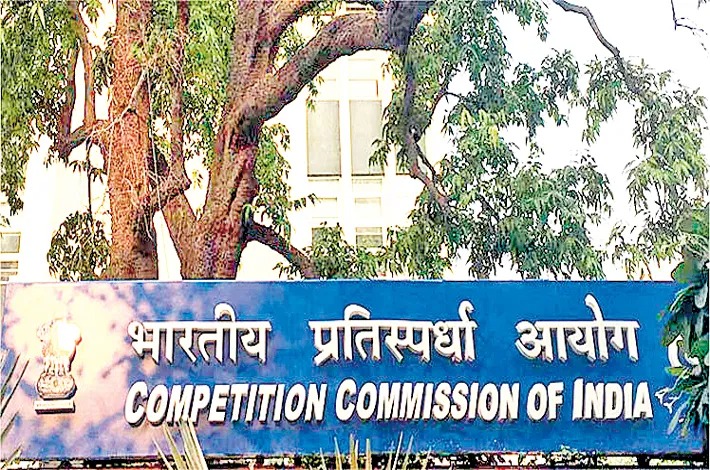Gokal Chand Mital, J.@mdashOn 8th September, 1982 at about 4 P. M. on G. T. Road near village Khara Kheri, an accident took place between Jeep PUG 8240 driven by Ram Chander PW 1 and Bus RRB 7291 driven by Nand Ram RW 2 and owned by the Rajasthan State Road Transport Corporation (''for short ''the Corporation''). There were seven occupants in the deep out of whom four died and three were injured. The legal representatives of the deceased and the injured filed separate claim applications. While Chander Pal injured claimed Rs. 10,000/- only, in other claim applications Rs. 40,000/- were claimed. The claims were filed against the Corporation only. The case was contested by the Corporation and the entire blame for the accident was sought to be placed on the driver of the Jeep. On the contest of the parties the following issues were framed:
1. Whether the claimant has no locus standi to file the petition ?
2. Whether the petition is bad for non-joinder of necessary parties namely driver and owner of the Jeep ?
3. Whether the accident was caused by the negligence of the driver of the Jeep No. PUG 8240 or the driver of the Bus No. RRB 7291 ?
4. To what amount of compensation the Petitioner is entitled to and from whom ?
5. Relief.
2. On the evidence led in the case, the Motor Accident Claims Tribunal came to the conclusion that the driver of the Jeep and the driver of the bus were negligent and their contributory negligence was fifty-fifty. Since owner and driver of the Jeep were not made parties, 50 per cent of the compensation found due was awarded against the Corporation by a common award dated 30th April, 1984. Against the aforesaid award, FAO Nos. 754, and 851 to 856 of 1985 have been filed by the Corporation, in which cross-objections have been filed by the claimants. In FAO Nos. 852, 854 and 856 of 1984, applications under Order 6 Rule 17 of the CPC were filed by the claimants, who sought enhanced compensation on the plea that when the claim applications were filed, advalorem court fees was payable and since the claimants were not in a position to pay the court fees, full amount was not claimed. Since now the amendment has been made for paying less court fees, enhanced compensation may be granted. The applicants were ordered to be heard with the main appeals. Accordingly, the appeals, cross-objections and the applications are being disposed of by this common judgment.
3. The liability of the Corporation to the extent of 50 per cent has not been disputed by Shri Munishwar Puri, Advocate, appearing for it. Moreover, appeals other than FAO Nos. 754, 852, 854 and 856 of 1984 have not seriously been pressed as reasonable compensation to the injured persons has been awarded. The argument was confined to the aforesaid four FA Os and two points were raised The first point raised was that since in the claim applications Rs. 40,000/- were claimed and the liability of the Corporation which was found to be 50 per cent, claim beyound Rs. 20,000/- could not have been awarded. The second point is that higher multiplier has been applied.
4. Adverting to the first point, I find that it has no merit whatsoever. In FAO No. 754 of 1984, it was found that deceased was 20 years old and was helping his father in cultivation. His dependency was found to be Rs. 4,000/- per year and after applying multiplier of 20 years, it was held that the father was entitled to compensation of Rs. 80,000/- but since liability of the Corporation was 50 per cent the award of Rs. 40,000/- was made against it. Rs. 40,000/- were claimed against the Corporation on the basis of fifty-fifty liability That is why, the claimants had restricted their claim to Rs. 40,000/- against the Corporation. It would, be wholly wrong to say that out of the claim of Rs. 40,000/- the liability of the Corporation has to be reduced to Rs. 20,000/- on fifty-fifty basis. Similar is the argument in FAO No. 856 of 1984 on the first point. In that case an award of Rs. 30,000/- has been given against the Corporation after finding that on the death of the wife of the claimant, aged 23 years, Rs. 60,000/- were payable, who was helping her husband in cultivation. Since liability of the Corporation was 50 per cent, award of Rs. 30,000/- was rightly made. In FAO No. 854 of 1984 the husband of the deceased, aged 35 years who was helping him in cultivation, was found entitled to Rs. 48,000/- as compensation and since the liability of the Corporation was 50 per cent, Rs. 24,000/- were awarded. The award of half amount, which comes within the claim of Rs. 40,000/- is well based. In FAO No. 852 of 1984, the deceased being 46 years old, dependency was found to be Rs. 36,000/- at the rate of Rs. 300/- per month by applying multiplier of 10. The claimant was awarded Rs. 18,000/- as the liability of the Corporation was found to be 50 per cent. Accordingly, the first point is rejected.
5. Now adverting to the second point, I find that it has also no merit In FAO No. 754 of 1984, the claimant is aged 50 years, whose son aged 20 years had died in accident. The son was helping his father in cultivation. The father would have lived for another 20 years and, therefore, the multiplier of 20 years has been rightly applied. The counsel for the Corporation has placed reliance on a judgment of S. S Sodhi, J. reported as Colonel K. S. Dhaliwal v. Jagdeep Riar (1986) 89 P. L. R. 121. There, father aged 60 years and mother aged 52 years had claimed compensation for the death of their son and multiplier of 14 years was applied. In the present case the father is 50 years old, therefore, multiplier of 20 years has been rightly applied.
6. In FAO Nos. 854 and of 1984, the argument raised is that there is disparity of multiplier because in FAO No. 856, 15 year''s multiplier has been applied whereas in FAO No. 854, 12 year''s multipliers has been applied. If the facts are probed, there had to be disparity I because in FAO No. 856, wife was 23 years old and a multiplier of 15 years was applied, whereas in FAO No. 854 the wife was 35 years old and multiplier of 12 years was applied. Hence, there is nothing wrong in the disparity on the multiplier, which is justified on the facts of each case. Accordingly the second point is also rejected.
7. Coming to the cross-objections, the learned Counsel appearing for the claimants has not been able to refer to any specific material on the record to justify any enhancement. As regards claim by the injured persons no argument worth noticing was raised. Regarding the claim made by the legal representatives of the deceased, the only argument raised was on the basis of the applications, which have been filed to claim enhanced compensation. The argument on the basis of those applications is that if the claim is allowed to be enhanced, then the claimants should be awarded to total amount found due by the Tribunal and not half of the amount because the liability of the drivers and owners of the two vehicles was composite, and, therefore, the liability of the driver of both the vehicles and owners would extend to whole of the amount. For this proposition, reliance is placed on Smt. Parsani Devi v. . The State of Haayana (1973) 75 P. L. R. 811.
8. After considering the whole matter, I am of the view that the argument has no merit on the peculiar facts of this case. In Smt. Parsani Devi''s case (supra), a reading of para 9 shows that the counsel for the State had not seriously contested the point in that case. The learned Counsel was not able to show any judgment where the liability of the drivers of two vehicles was apportioned and yet an order was made that the liability to pay compensation would be joint and several. In torts the rule of apportionment of negligence and liability is well known. In the present case, it has been clearly found on evidence that it was a case of apportionment of negligence and was not a case of joint negligence. Since no point was made to claim enhancement of compansation except on the aforesaid argument, there is no merit in the cross-objections and the applications for amendment of the claim, are infructuous because even if amendment is allowed, the claimants cannot be allowed more that what has been awarded by the Tribunal.
9. For the reasons recorded above, the appeals and cross-objections are dismissed with no order as to costs and the applications filed in FAO Nos. 852, 854 and 856 of 1984 stand disposed of, as indicated above.

